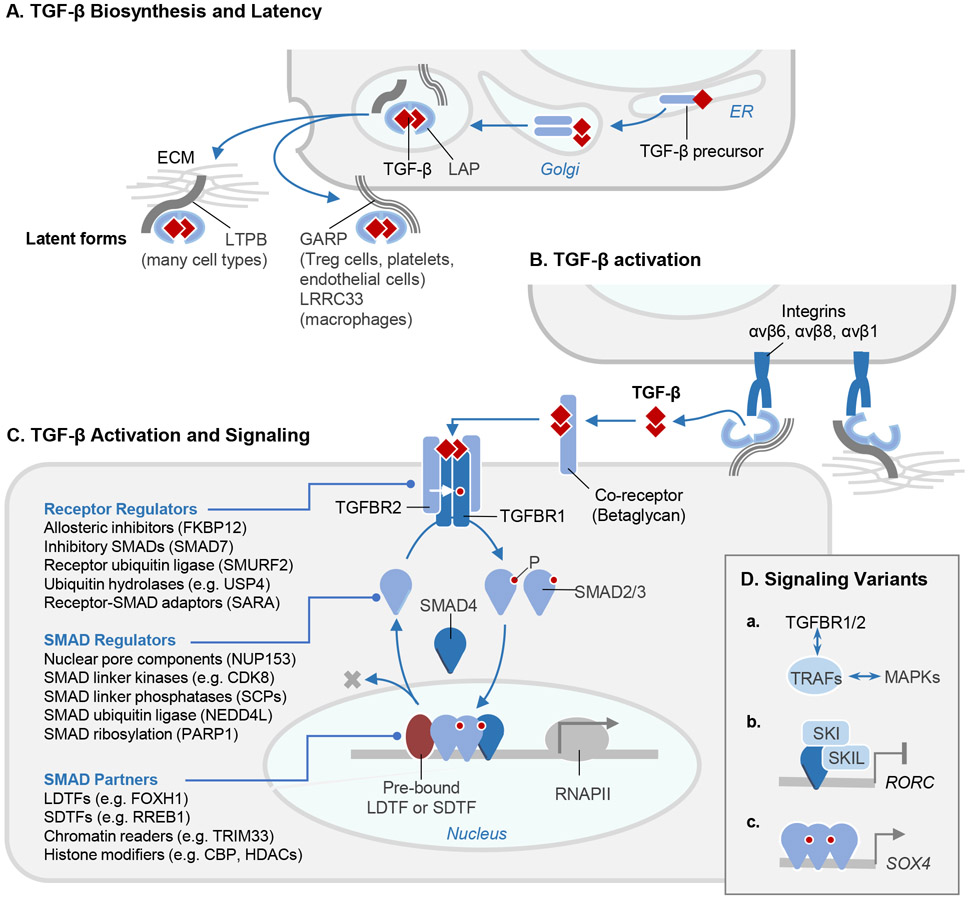Figure 2. The TGF-β signaling pathway.
A. TGF-β cytokines are generated by cleavage of the dimeric C-terminal domain of a biosynthetic precursor in the Golgi. The mature cytokine remains sequestered by non-covalent binding to the N-terminal domain of the precursor, or latency-associated peptide (LAP). LAP in this complex becomes disulfide-linked to the latent TGF-β binding protein (LTBP), which is deposited in the extracellular matrix (ECM) after secretion. Alternatively, in the indicated cell types, LAP in the TGF-β complex becomes disulfide-linked to the membrane-anchored proteins GARP or LRRC33 and retained on the cell surface. B. Activation of latent TGF-β involves binding of LAP to αv integrins on adjacent cells, leading to a conformational change that releases the captive TGF-β for binding to receptors. C. The membrane proteoglycan Betaglycan functions as a co-receptor that collects TGF-β for presentation to signaling receptors. TGF-β binds to two pairs of transmembrane serine/threonine protein kinases known as TGFBR1 (type I receptor) and TGFBR2 (type II receptor), to assemble the receptor complex. In this complex, TGFBR2 phosphorylates and activates the TGFBR1 kinase, which binds and phosphorylates (P) the transcription factors SMAD2 and SMAD3. On phosphorylation, these SMADs form trimeric complexes with SMAD4 and accumulate in the nucleus to bind and transcriptionally activate target loci. Recognition of these loci by the SMAD complex frequently requires molecular interaction with lineage-determining transcription factors (LDTF) or signal-driven transcription factors (SDTF). The signaling cycle ends with SMAD dephosphorylation and dissociation from DNA for another round of signaling, or with SMAD polyubiquitination and degradation. Each step in the pathway is controlled by different classes of regulators, the most prominent of which are listed (with examples). D. Variant versions of this pathway include: (a) TGF-β receptors links with MAPKs through TRAF adaptor proteins; (b) SMAD4 recruitment of a SKI-SKIL repressor complex to certain target genes (e.g. RORC in TH17 helper T cells) to prevent leaky transcription in the absence of TGF-β; and (c) SMAD4-independent activation of certain target genes (e.g. SOX4 in pancreatic epithelial progenitors) by SMAD2 and SMAD3.

